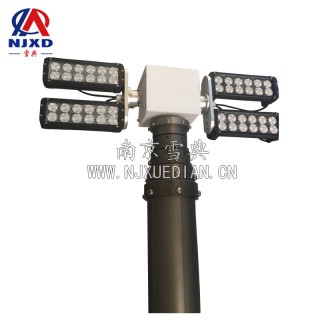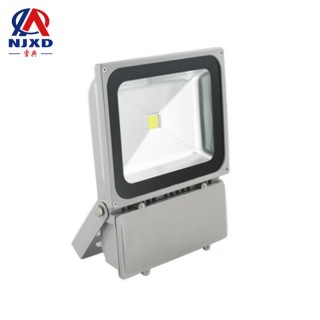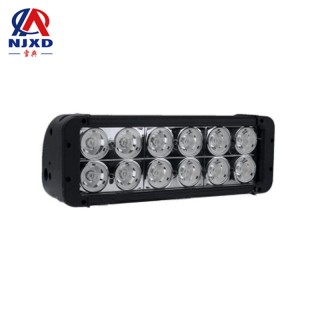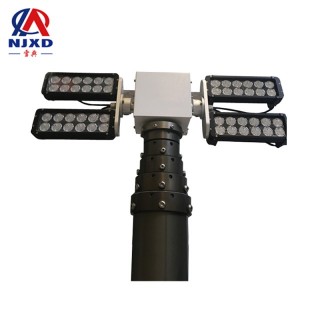NEWS
Components and characteristics of LED energy-saving lamps for lifting lighting
Time:2021-03-03 View:

Component
LED chip: good LED chip, high luminous efficiency, low temperature rise, high color rendering index, high junction temperature, antistatic.
Heat dissipation: if we emphasize that the LED is cold light illuminator and does not need heat dissipation, it is completely wrong. Before the LED chip with really low heating is developed, the LED does not add high-quality radiator, then its life may be far less than the current ordinary energy-saving lamps! Because when the light attenuation reaches the initial luminous flux of 70%, it has already marked the end of the life of LED energy-saving lamps.
Power supply: whether it has high temperature and humidity, whether it has passed high pressure safety regulations (UL), and whether it has passed EMC electron magnetic compatibility (EMC/EMI) are also definable targets, it also determines the real life of LED energy-saving lamps. In the barrel effect, the power supply may be the short board of LED energy-saving lamps.
Lampshade: the lampshade is the secondary light distribution of LED energy-saving lamps. Currently, there are transparent lamp shade lampshades, frosted lampshades, milky white lampshades and light diffusion lampshades.
Without lampshade and transparent lamp shade, there is no secondary light distribution, LED can be seen, multi-LED is multi-light source, staring directly, and the object is exposed to deficiency.
When the frosted lampshade is lit, the LED light source can be seen, and some objects are also virtual.
The milky white lampshade lights up and cannot see the LED light source, but the light transmittance is low.
High-quality LED energy-saving lamps generally use light diffusion materials. When the LED light reaches the lampshade, the light is diffused. After lighting, the LED light source cannot be seen. LED energy-saving lamps become a large light source, irradiating objects are not imaginary, and the light diffusion type lampshade generally has a light transmittance of over 80%, with good effect.

Features
1. High efficiency and energy saving: compared with the same brightness, 3W LED energy saving lamps consume 1 degree of electricity in 333 hours, while ordinary 60W incandescent lamp consume 1 degree of electricity in 17 hours, ordinary 5W energy-saving lamps consume 1 degree of electricity in 200 hours.
2. Super long service life: the semiconductor chip emits light, has no filament, no glass bubble, is not afraid of vibration, is not easy to break, and has a service life of 50,000 hours (the service life of ordinary incandescent lamp is only 1,000 hours, the service life of ordinary energy-saving lamps is only 8,000 hours).
3. Health: The light is healthy. The Light contains less ultraviolet rays and infrared rays, and produces less radiation (the light of ordinary lamps contains ultraviolet rays and infrared rays).
4. Green and environmental protection: it does not contain harmful elements such as mercury and xenon, which is beneficial to recycling. Ordinary lamps contain elements such as mercury and lead.
5. Vision protection: DC drive, no stroboscope (ordinary lights are AC drive, it will inevitably produce stroboscope).
6. High luminous efficiency: the highest luminous efficiency of a company in the laboratory has reached 260lm/W, while the single high-power LED on the market has also exceeded 100lm/W. The LED energy-saving lamp made has lost power efficiency, the actual luminous efficiency of the lampshade is 60lm/W, while the incandescent lamp is only about 15lm/W, and the energy-saving lamp with good quality is about 60lm/W, so in general, the luminous efficiency of LED energy-saving lamps is equal to or slightly better than that of energy-saving lamps. (Data from May, 2011)
7. High safety factor: the required voltage and current are small, and the potential safety hazard is small, which is used in dangerous places such as mines.
8. Great market potential: Low Voltage, DC power supply, battery, solar power supply, remote and mountain areas and field lighting and other places with low power and low power.

Specification terms
1. LED Size:
0603, 0805, 1210, 5050 refer to the light-emitting element used on the LED lamp belt-the size of the LED (English/metric). The following is a detailed introduction to these specifications:
0603: the conversion to metric system is 1005, which means that the length of the LED element is 1.0mm and the width is 0.5mm. Industry abbreviation 1005, English name is 0603.
0805: the conversion to metric system is 2125, which means that the length of LED components is 2.0mm and the width is 1.25mm. The industry abbreviation is 2125, and the English name is 0805.
1210: the conversion to metric system is 3528, which means that the length of LED components is 3.5mm and the width is 2.8mm. Industry abbreviation 3528, English name is 1210.
5050: this is the metric name, which means that the length of the LED element is 5.0mm and the width is 5.0mm. Industry abbreviation 5050.
2. Number of LED lights:
15 lights, 30 lights, 60 lights refer to how many LED components are welded on the length of the LED strip per meter. Generally speaking, the 1210-specification strip is 60 LEDs per meter, the 5050 standard light strip is 30 LEDs per meter, and the Special One is 60 LEDs per meter. The price of LED lights with different LED numbers is different, which is also an important factor to distinguish the price of LED lights.
3. Color temperature:
When a standard black body is heated, the color starts to change from dark red-light red-orange yellow-white-blue when the temperature rises to a certain degree. The color of a light source is the same as that of the black body, we call the blackbody's absolute temperature at that time the color temperature of the light source.
Generally speaking, color temperature is not an indicator for assessing LED light strip, but many foreign customers will make a special requirement because of the use environment.
The color temperature of the light source is different, and the light color is also different:
The color temperature is below 3300K, and the light color is reddish to give a warm feeling; There is a steady atmosphere and a warm feeling. It is generally called Warm color temperature. The color temperature is in the middle of 3000-6000K, and people have no obvious visual and psychological effect and feel refreshed under this color tone. Therefore, it is called "neutral" color temperature. The color temperature exceeds 6000K, and the light color is bluish, giving people a feeling of cool, commonly known as cold color temperature.
4. Brightness:
cd( Khandra), the basic unit of luminous intensity, Khandra is one of the basic units of the international unit system.
Generally, different colors of LED lights have different luminous intensity, and the common unit is mcd, that is, Khandra. The higher the value, the greater the luminous intensity, that is, the brighter. This is an important indicator to evaluate the brightness of LED strip. The higher the brightness requirement, the more expensive the strip is. This is because the high brightness LED chip is expensive, and the higher the brightness, the more difficult the packaging.
5. Luminous angle:
This refers to the light-emitting angle of LED elements on the LED lamp. Generally, the light-emitting angle of SMD elements is 120 degrees. The larger the luminous angle is, the better the astigmatism effect is, but relatively, its luminous brightness is correspondingly reduced. The light emitting angle is small, the light intensity is up, but the range of illumination will be reduced. Therefore, another important indicator for evaluating LED light strip is the luminous angle. There are some bad manufacturers on the market, in order to improve the brightness of light to earn higher profits, deliberately reduce the angle of light, a little careless, will buy such shoddy components.
6. Voltage:
This refers to the input voltage of LED strip. Generally, the commonly used specification is 12V DC, and some are 24V.

CATEGORY
NEWS
- Classification of LED energy-saving lamps for lifting lighting
- Components and characteristics of LED energy-saving lamps for lifting lighting
- Disadvantages and purchase of LED energy-saving lamps for lifting lighting
- Heat dissipation and characteristics of LED energy-saving lamps for lifting lighting
- Development Trend and identification of advantages and disadvantages of lifting LED energy-saving la